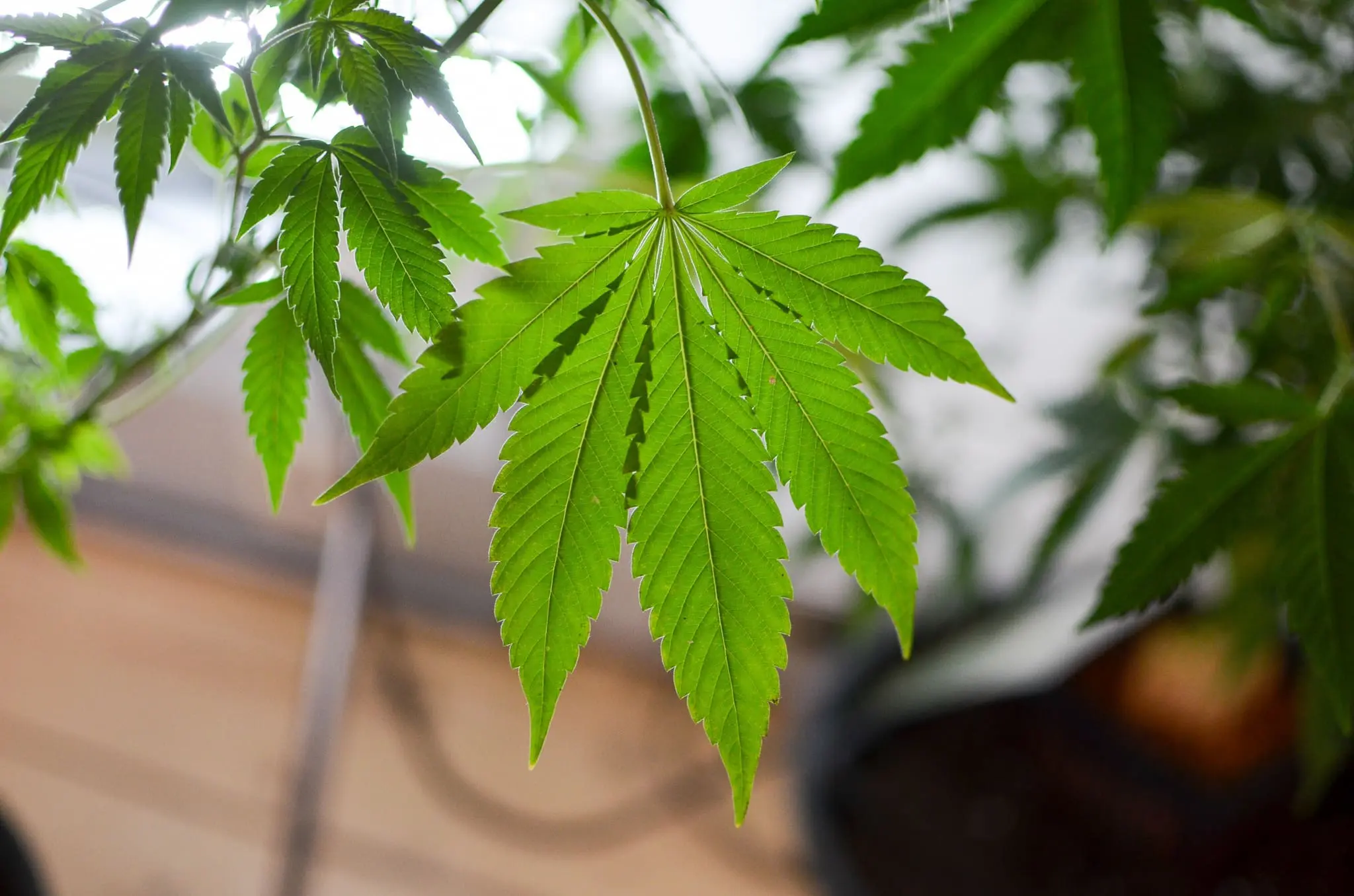Science & Health
Long-Term Medical Marijuana Use Tied To Reduced Opioid Dosages, American Medical Association-Published Study Shows

A new study, led by researchers at New York’s Department of Health and published this week by the American Medical Association, found that chronic pain patients who received medical marijuana for longer than a month saw significant reductions in prescribed opioids.
The analysis looked at data from more than 8,000 patients registered in New York’s medical cannabis program, tracking how their opioid prescriptions changed over time. It concluded that among pain patients who received marijuana for more than 30 days, opioid amounts fell by nearly half.
“Patients’ daily opioid dosages were reduced by 47% to 51% of the baseline dosages after 8 months.”
New York’s acting health commissioner, James McDonald, called the study “further evidence that medical cannabis has the potential to reduce the amount of opioid-based medications needed to treat chronic pain.”
“These findings have the potential to further inform health providers and policymakers here in New York as well as in other jurisdictions where medical cannabis is not yet legalized or used to its fullest potential,” he said in a statement.
The new peer-reviewed study, co-authored by researchers at the Health Department, the state’s Office of Cannabis Management and the City University of New York (CUNY) Graduate School of Public Health and Health Policy, was published in the January 30 issue of the Journal of the American Medical Association (JAMA) Network Open.
“Receiving medical cannabis for a longer duration was associated with prescription opioid dosage reduction.”
“This study found meaningful reductions among patients receiving medical cannabis for 30 days or longer,” said lead author Dr. Trang Nguyen, of the Department of Health. “Patients’ daily opioid dosages were reduced by 47 percent to 51 percent of the baseline dosages after eight months.”
Patients who received cannabis for less than 30 days, meanwhile, saw reductions of just 4 percent to 14 percent.
As #DrJamesMcDonald said: its findings are “further evidence that medical cannabis has the potential to reduce the amount of opioid-based medications needed to treat chronic pain.” https://t.co/FlZLHftIAu
— NYSDOH (@HealthNYGov) February 1, 2023
Researchers examined data from the state’s medical cannabis program between 2017 and 2019 and linked patient records with official logs of prescribed opioids, which are reported to the state’s prescription monitoring program registry. They included patients with medical cannabis recommendations for chronic pain and at least one opioid prescription at the time they were first dispensed marijuana.
The 8,165 patients in the study were split into two groups: those who, records showed, received cannabis for more than 30 days after first being dispensed cannabis, and those who joined the registry but apparently stopped making purchases after less than a month. Patients were also divided into three groups based on their prescribed opioid dosage prior to receiving medical cannabis.
Researchers then compared the amount of opioids prescribed to the groups during the eight months after patients first received medical marijuana.
While state records showed that both groups were prescribed lower doses of opioids, the reduction was more than 5.6 times greater for patients who received cannabis for the longer duration. And patients who were initially being prescribed larger amounts of opioids saw greater reductions after receiving medical cannabis.
Some limitations of the study, the authors acknowledge, include the absence of race and ethnicity information as well as any data on patients’ comorbidities or the underlying causes of their chronic pain. Nor does the study include any assessment of cannabis dosages or product type. Researchers also couldn’t know why patients chose to use medical marijuana or whether the decision was intended to decrease their reliance on opioids.
What’s more, while the study examines whether patients received medical cannabis or were prescribed opioids, there’s no way to know whether patients actually used any or all of the amounts provided—or whether patients supplemented those amounts with drugs from other sources.
Medical marijuana “is typically not covered by insurance and was thus unaffordable.”
Nevertheless, authors say, the study is the first with a large sample size “that evaluated the association between the length of receiving [medical cannabis] and reduction in daily opioid doses.” Most earlier research have relied on self-reported survey data or were limited to small groups of patients.
“These findings contribute robust evidence for clinicians regarding the potential benefits of [medical cannabis] in reducing the opioid burden for patients,” the study says, noting that as of 2019, 1 in 5 adults had chronic pain, and more than 22 percent of those said they’d recently used prescription opioids for relief.
With opioid-related deaths at crisis levels, more restrictive guidelines for prescribing the drugs have resulted in “discontinuation and reduced initiation of opioid prescriptions,” authors note. That risks cutting off patients abruptly, putting people who’ve come to rely on opioids to manage their chronic pain in a difficult spot. Some turn to the unregulated market, where dangers such as fentanyl poisoning are far greater.
“Without humane tapering of opioids and effective alternatives for patients receiving long-term opioid therapy,” the study says, “many of them are at high risk of overdose (through turning to the illicit market) and of suicide.”
Researchers note that medical treatment also varies considerably by income, citing data showing that people insured by Medicaid receive opioids at higher rates than those with private insurance and are more likely to receive long-term opioid therapy. “Few patients in the study population were insured by Medicaid,” they write, “and of those, many who initiated [medical cannabis] did not continue. This is because [medical cannabis] is typically not covered by insurance and was thus unaffordable.”
Study co-author Nicole Quackenbush, of New York’s Office of Cannabis Management, acknowledged patients who’ve long reported that cannabis helps effectively manage pain.
“Since the inception of the Medical Cannabis Program in New York State, we’ve heard anecdotal evidence from patients, caregivers and health care providers suggesting that medical cannabis can reduce the amount of opioids patients take to manage pain,” she said, “and now we have the study demonstrating a statistically and clinically significant reduction for those patients who were on medical cannabis for a longer duration.”
Legalization advocates greeted publication of the new study as more evidence that cannabis can help manage pain, in many cases better and more safely than prescription drugs. In a blog post, NORML called the study’s findings “consistent with numerous other studies documenting that patients frequently use cannabis for pain mitigation, and that many patients either reduce or eliminate their consumption of opioids and other medications following cannabis therapy.”
“The relationship between cannabis and opioid use is among of the best-documented aspects of marijuana policy,” said NORML Deputy Director Paul Armentano. “In short, the science demonstrates that marijuana is a relatively safe and effective pain reliever — and that patients with legal access to it consistently reduce their use of prescription opioid medications.”
There’s no deficit of anecdotal reports, data-based studies and observational analyses that have signaled that some people use cannabis as an alternative to traditional pharmaceutical drugs like opioid-based painkillers and sleep medications. But the new research contributes to a growing body of published research examining cannabis as a viable treatment for chronic pain, and particularly as a replacement for opioids.
Last month a similar report found that adult-use cannabis legalization at the state level was associated with “reductions in opioid demand.” Leveraging data from Drug Enforcement Administration (DEA) tracking of prescription opioid shipments, that study found a “26 percent reduction in retail pharmacy-based codeine distribution” in legal states.
Another study recently published by the American Medical Association (AMA) found that roughly one in three chronic pain patients report using marijuana as a treatment option, and most of that group has used cannabis as a substitute for other pain medications, including opioids.
A separate AMA study found an association between state-level medical marijuana legalization and significant decreases in opioid prescriptions and use among certain cancer patients.
A study released in September found that giving people legal access to medical cannabis can help patients reduce or stop use of opioid painkillers without compromising their quality of life.
The same month, another study found that the pharmaceutical industry takes a serious economic hit after states legalize marijuana—with an average market loss of nearly $10 billion for drugmakers per each legalization event.
Last year, a research paper that analyzed Medicaid data on prescription drugs found that legalizing marijuana for adult use is associated with “significant reductions” in the use of prescription drugs for the treatment of multiple conditions.
Photo courtesy of Philip Steffan.



